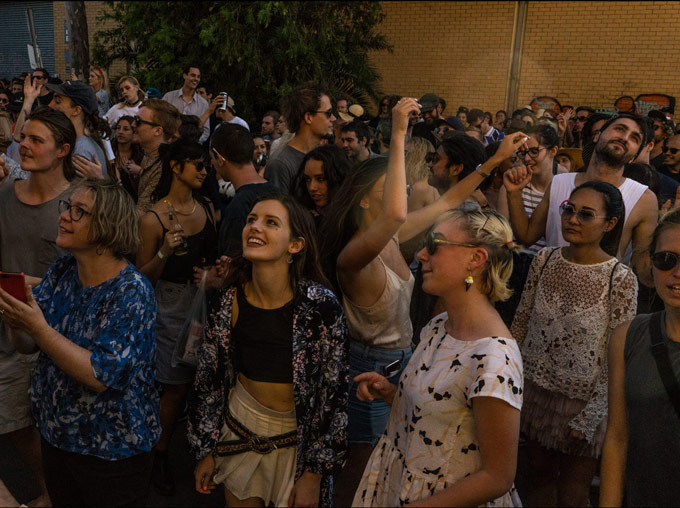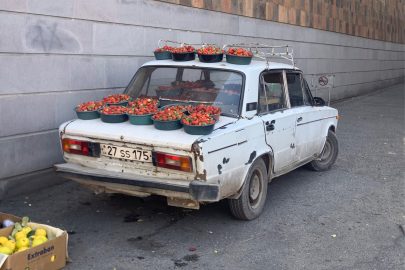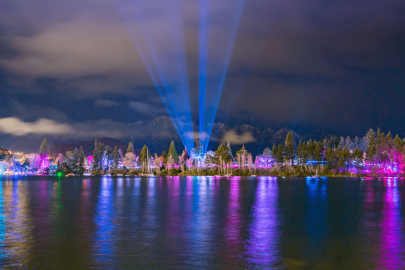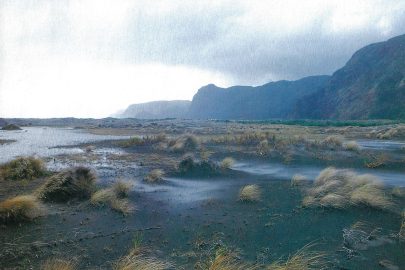Feb 22, 2017 Travel

You might think of Sydney as a bit of a floozy, a good-time girl. Kind of brassy, showy and shiny, even a little dirty.
But returning to the city, on the cusp of this summer, you also see she’s more than that. The hard edges are discernible, certainly, but she seems more rounded these days. Well fed. Sleek and slick, still, and not necessarily the worse for that. That sweet sway of the hips, the cheeky sideways grin, the glossy expensive hair. The city is swathed in fairy lights, and it’s not even the festive season. Is it always Christmas here? Sydney’s show puts Parnell’s twinkling strands to shame. But don’t be fooled: this show pony is as seductive as always. Seductive as all hell.
Even before you leave the airport, it pulls you close: the squeezy heat, the babble of engines and of people, the mellow yellow late-afternoon light. Sitting in the traffic surging into the city, you bask in that energy, Sydney’s fingers thrumming impatiently against the sides of the cab. The big city has come calling. It wants you to play.
The sensation shatters when you arrive at the hotel and the taxi driver drops your bottle of duty free. You step over the rivulets of gin and glass daggers to check in, trailing an unequivocal cloud of alcohol. The receptionist is quick with quips but ignores the fact you have been lightly marinated in Tanqueray. Is she pretending it never happened? Probably. So Sydney.
The hotel is in a heritage building that’s had a makeover. In this incarnation the old wharf has, at first appearance, surrendered to all the trappings of modernity, and is working hard at having a good time. The openness of the plentiful public spaces is broken by self-conscious nooks and corners and booths, by huddles of deliberately mismatched chairs, and shitloads of fairy lights. The staff sport shirts in minty green or Sydney sky blue, along with tattoos and multiple piercings. A brace floats off a shoulder to casually stroke a slim young hip. The concierge, poor bastard, labours beneath a beret in an outrageous shade of pink.
But looking up, through all of these distractions, you can still trace the building’s skeleton, the fine fan of bones. Sydney’s relentless dance of reinvention continues, but everywhere you look, the past is fighting to break through.
Not that they’re trying to hide it — well, not all of it anyway. The city is audibly awash with careless nostalgia — Vanilla Ice (Vanilla Ice!) struts around a lift, Kylie coos in shops. Elvis spills out of a Potts Point pub; Abba serenades taxi drivers; Blondie bounces around Newtown.
Metres from the hotel a pie cart, Harry’s Café de Wheels, hawks its humble pies, serving up the same slop since 1938. These days it’s a carefully burnished anomaly, more tourist draw than pissed locals’ late-night saviour. Because eating out in Sydney has transcended obsession; it’s a sport. That new Italian restaurant in the city’s newest “eating precinct”? It’s more than just a restaurant — it’s a sparkling temple of conspicuous consumption, with an airy adjoining food emporium styled on the market halls of Barcelona, a cellar containing 2000 bottles of wine, and its own farm to supply, among other things, eggs from 3000 resident chooks.
Size matters, when it comes to cities. As Sydney’s population blooms, it grows fatter, gets richer. Yet Australia’s most dazzling metropolis is also its most unequal — more than a third of its income is shared among just 10 per cent of its residents. The fact of that simmers malevolently in the nation’s soft underbelly, along with its current treatment of refugees, its active discrimination against swathes of its own citizens, its own damning past. Does Sydney’s sweet face make it less strange, somehow, that a visitor can spend days on foot in the central city and not see evidence of a single Aboriginal Australian? Does it make it more forgivable that you don’t ask yourself, why is that?
Perhaps it’s understandable that we choose to swim instead in the city’s soothing shallows. To savour Sydney’s best version of itself, all shimmer and shine. Turn away from the thud and stink of the rubbish truck to swallow whole the sweeter smells that ripen quickly in the heat. Towards the lilac haze of jacarandas in flower, the perfume of eucalyptus leaves on a warm wind.
Downtown, in a narrow cleft between high-rises, boys stroll in shorts and girls who really shouldn’t, wear shorter ones that show off their pillowy arses. A tiny boy, contained neatly between his parents, holds a large leaf like a trophy.
Beyond Pitt St and Paddington, Potts Point and Darlinghurst, Sydney’s other selves play out in an endless loop. Yet even here, the city is busy birthing better versions of itself.
Pocked with piles of rubble, the inner-south suburb of Rosebery thrusts impatiently forward with its own reinvention, its unlovely light industrial roots making way for more shopping, more eating. Rosebery’s streets ooze artisans whose mandate appears, simply, to be more — the strategy of a gelato shop offering 35 fanciful flavours, made on the premises, is validated by the crowd at the counter; an old warehouse is now home to a design store whose every design is freighted with meaning, “deeply committed” as it is to social enterprise.
In Chippendale, the guts are being torn out of a dour, 100-year-old building to make way for the future: apartments which will overlook a new public park where the grass looks greener. At the park’s midpoint, a Len Lye-esque kinetic sculpture writhes, framing a new shopping mall. Of course, it’s more than that — the gleaming glass towers of the “Living Mall” are adorned with a vertical garden of indigenous flowers and plants, “the buds and blooms of the vegetation [forming] a musical composition on the façade”, trumpets a promotional blurb. The mall even boasts a “beating heart” — Australia’s first super-sized digital wall. Next door is One Central Park, renowned French architect Jean Nouvel’s “residential triumph”, crowned by a panel of motorised mirrors that capture sunlight and direct it down onto the living mall’s living walls. Even the city’s shiny surface is feeding on itself.
Other precincts are open for business even as they’re still being built — so new that know-all taxi drivers and hotel doormen prove unsure of exactly where they are. The transformation of a long disused 22-hectare site at the north-western tip of the CBD into office towers, shops, restaurants, luxury apartments, a six-star hotel, a casino and parkland is a controversial $6 billion work in progress. Renzo Piano, the “rock star” Italian architect who designed London’s Shard, is working on three more apartment buildings for the harbourside project. The precinct even has a new name, Barangaroo, a nod to the area’s lost life as an Aboriginal hunting and fishing ground. Now it offers Japanese fusion burgers, among myriad other eating options.
Nearby, in the harbour, Cockatoo Island holds its own secrets. In the 1800s, convicts were sent here, first to build their own prison, then for hard labour in the island’s quarry; later it became a reform school for girls, then a dockyard. Now people come to glamp overnight, take a “haunted history” night tour, wander through the bleak cells, whose sandstone walls seem steeped in desperation.
Despite its benign present, an air of disquiet clings to the rusting cranes, a handless clock face, the seagulls that scream at passing planes.
For 35 years, an eccentric named Arthur Stace obsessively scrawled a single word on Sydney’s footpaths: “Eternity”. He wrote it in chalk, over and over and over between 1932 and 1967, knowing it would always fade with feet and rain and time. After Stace died, an anonymous imitator carried on his strange legacy, and “Eternity” endured in the central city — for a while. Sydney moved on, as Sydney does, and another strange and hopeful citizen took up the chalk — now it’s “Empathy” that appears, in a respectable echo of Stace’s copperplate script, on the city’s pavements.
What does that mean, when blood spills across these same footpaths in yet another unfathomable round of Sydney’s murderous gangland wars? When a Sydney Morning Herald journalist writes about his plans to leave the city because its “bad and ugly” traits have won out over the good? Yet, he admits, he’ll be back in a year or two.
What will he find when he returns? A surfeit of empathy, if only in chalk? A city less ravenous, no longer straining and grasping, having survived its own terrible excesses, realised its own empty ambitions? A city that, finally, fits its own skin?
It will be a shining city, still. But — as it does for all of us — the past lies in wait. And perhaps, at last, we can live with that.
Images are composites.
This article was first published in the January- February 2017 issue of Metro.
Follow Metro on Twitter, Facebook, Instagram and sign up to the weekly e-mail






